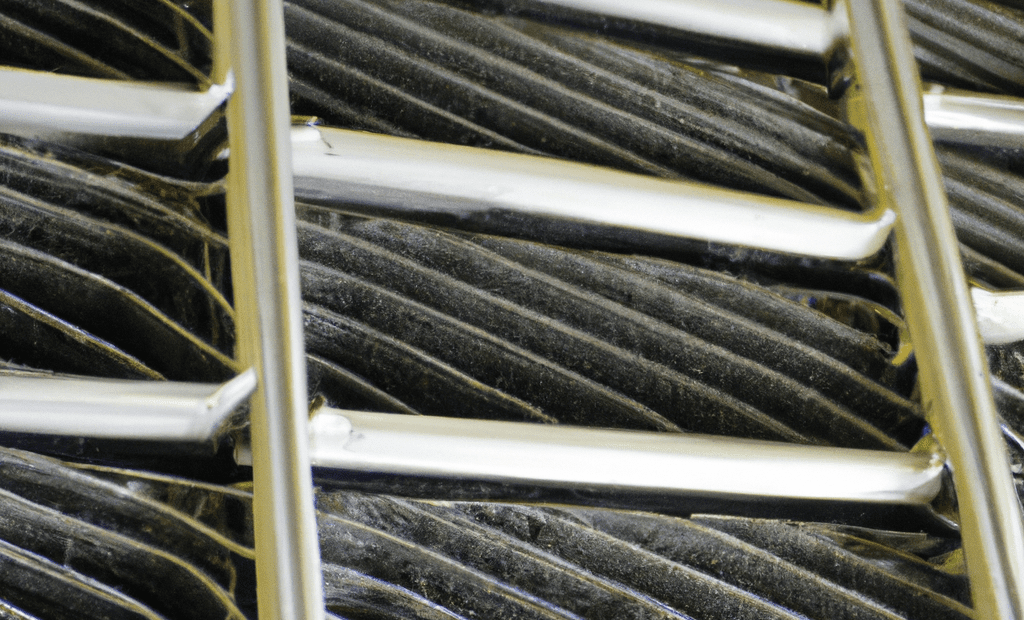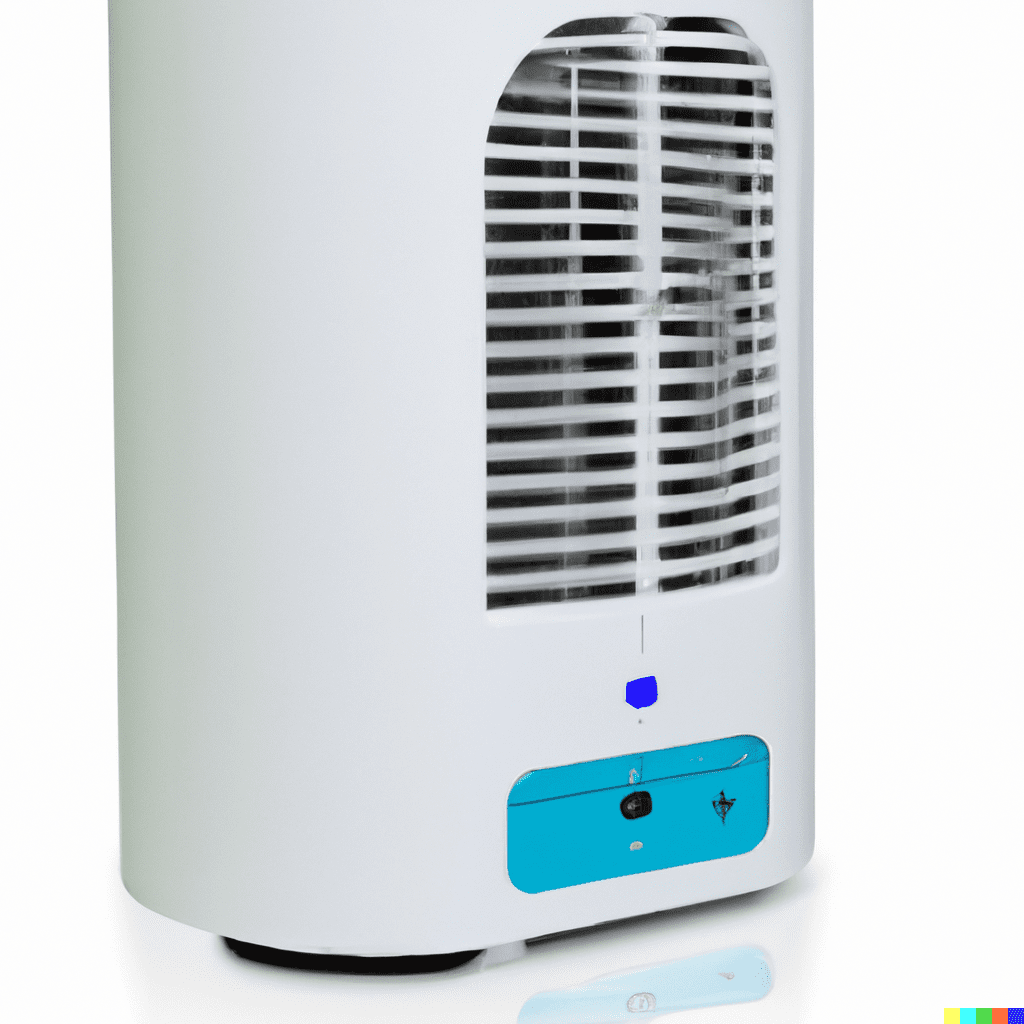Do Air Purifiers Work & Are They Worth Buying?

Allergens, pet dander, smoke, and other particles cause serious respiratory issues. We look into what air purifiers do and whether they can reduce air pollutants.
Do air purifiers work?
With the rise of air pollutants in the atmosphere, along with challenges posed by seasonal flu and COVID-19, it pays to ask “do air purifiers actually work?”
Air purifiers can provide home safety by filtering out allergens, dust, mite feces, mold, pollen, smoke, and many indoor air contaminants. However, the type of air purifier you choose for your home has to be the right fit not only for indoor comfort but for your budget and the forced air system in your residence.
The outbreak of COVID-19 and the rise in work-from-home opportunities led to most of us spending time indoors. Due to the viruses being airborne, having clean air meant ensuring the safety of family members.
Many homeowners rely on a forced-air HVAC system to filter indoor air; however, it only cleans out certain particles depending on its Minimum Efficiency Reporting Value (MERV). On the other hand, a higher efficiency filter may clean out heavier particles but may block airflow through the forced air system if they are of the wrong size.
Setting up a whole-house filtration system may be worthwhile in the long run to retain improved air quality. However, relying solely on your air purifier isn’t the best solution. Use natural ventilation by letting in the fresh air, removing harmful sources of pollutants in your home, and cleaning out filters.
In order to get the best out of your investment, let’s understand how they work and what they can do for you.
What is an air purifier?
An air purifier draws in air through a fan which then passes it through a filter into the rooms. They clean out dust particles and allergens as efficiently as they’re built to. Depending on the size of your home, you want to set up a unit that’s sized to perform properly for your space.
How do air purifiers really work?
Air purifiers come in two shapes: whole-house air purifiers (tied to your HVAC equipment) and portable air purifiers.
Given that portable air purifiers filter the air for only one room, we do not recommend investing in them as you will run into heavy maintenance by having to clean them out frequently.
Whole house air purifiers pull in air from the home’s HVAC (heating, ventilation, and air conditioning) system and run it through a filtration system.
The air is then returned to the home through the HVAC system. They use a combination of filtration methods such as HEPA filters, activated carbon filters, and UV-C lights to remove a variety of pollutants, including allergens, dust, and bacteria. Some systems also use ionization to help remove pollutants.
Every whole house unit will use a unique filtration method and technology based on how it’s designed to perform. Your HVAC system should be tuned to work efficiently with the air purifier or the system may push out unfiltered air or break down.
Hunting for a furnace replacement? You can finance a furnace with payments deferred for 12 months.
What contaminants and allergens do air purifiers filter out?
Particulate matter (PMs)
PMs are air-borne contaminants that come in two forms, either PM2.5 with 2.5 microns (one-millionth of a metre) in diameter or less or PM10 with 10 microns in diameter. The former being finer can enter respiratory airways causing and aggravating breathing problems. All whole-house air purifiers can eradicate the finest particulate matter.
Common types of PMs include dust, pollen, smoke, pet dander, and fungi. High-efficiency particulate air (HEPA) filters are particularly effective at capturing these particles.
Volatile Organic Compounds (VOCs)
VOCs originate from products containing organic chemicals which include many that are used in homes for painting, cleaning, cooking, glues, and furniture coating.
Activated carbon filters can effectively remove VOCs from the air. Ensure you install a purifier that is designed to filter the finest VOCs as MIT scientists have found that most consumer-grade air cleaners don’t effectively remove air VOCs. However, air purifiers with activated carbon filters that don’t rely on chemical processes, were found to be extremely effective to clean out VOC-infected air.
Microorganisms
Air purifiers with UV-C lights can kill bacteria, viruses, and mold spores, which can help to improve indoor air quality.
Odors
With activated carbon filters, air purifiers mimic processes found in nature to disinfect and deodorize the air 24 hours a day. It absorbs odors, such as smoke, cooking smells, and pet odors.
Gases
Some air purifiers feature specialized filters that can remove gases such as radon and carbon monoxide.
What is the difference between an air purifier and a HEPA furnace filter?
A HEPA furnace filter is a type of filter that is installed in a home’s HVAC (heating, ventilation, and air conditioning) system. It is designed to capture particulate matter such as dust, pollen, and pet dander as the air is circulated through the filter. The filter typically captures particles as small as 0.3 microns with a 99.97% efficiency rate. HEPA furnace filters are considered to be among the most effective types of air filters, but they typically remove only particulate matter and not gaseous pollutants such as VOCs, ozone, or odors.
An air purifier, on the other hand, is a standalone device that is designed to remove a variety of pollutants from the air. They typically use a combination of filtration methods, such as HEPA filters, activated carbon filters, and UV-C lights, to remove a variety of pollutants, including allergens, dust, and bacteria. Some systems also use ionization to help remove pollutants. Air purifiers can be portable or whole-house units and they can be located in specific rooms or placed centrally in the home.
What is the difference between UVV and UVC air cleaning devices?
UV-C (ultraviolet C) and UV-V (ultraviolet germicidal irradiation) air purifiers are both types of air purifiers that use UV light to kill or inactivate microorganisms, such as bacteria, viruses, and mold spores, in the air. However, they differ in the specific wavelength of UV light that they use.
UV-C air purifiers use UV light with a wavelength of between 200 and 280 nanometers (nm). This wavelength is particularly effective at killing microorganisms, and UV-C air purifiers are often used in hospitals, laboratories, and other settings where controlling microorganisms is critical.
UV-V air purifiers use UV light with a wavelength between 240 and 280 nm. UV-V air purifiers are designed to inactivate microorganisms by disrupting their DNA, which can prevent them from reproducing. UV-V air purifiers are commonly used in residential and commercial settings for general air purification.
In summary, UV-C air purifiers are used to kill microorganisms and UV-V air purifiers are used to inactivate microorganisms.
What are the benefits of air cleaners?
Improved indoor air quality
Whole-house air purifiers can remove a wide range of pollutants, including particulate matter, volatile organic compounds (VOCs), microorganisms, and odors, which can help to improve the overall air quality in the home.

Reduced allergens
They can remove allergens such as dust, pollen, and pet dander, which can help to reduce symptoms of allergies and asthma.
Improved respiratory health
By removing pollutants such as dust, mold spores, and VOCs, whole-house air purifiers can help to improve respiratory health and reduce the risk of respiratory infections.
Increased energy efficiency
They can help to keep HVAC systems clean and running smoothly, which can increase energy efficiency and reduce the need for repairs.
Increased comfort
Whole house air purifiers remove a variety of odors across rooms, which can increase the overall comfort of the home.
Is there a downside in buying an air purifier?
Unable to filter smaller particles due to the need for airflow
Air purifiers may block the airflow if they block the air duct path of your furnace. Air purifiers with a MERV rating between 13 and 16 offer the best protection against the finest particulate matter.
Requires an HVAC technician for installation
Whole house purifiers are industry-grade equipment that requires professional HVAC installation. This ensures the safety and efficiency of your house and unit. This comes with an upfront cost but can prove cost-effective if paired with the replacement of your HVAC system.
Has a higher initial cost
Due to the upfront cost being higher than most people’s budgets, many shy away from exploring the long-term benefits altogether. Higher efficiency units cost more but can noticeably reduce maintenance costs as is typical with portable air purifiers.
Higher energy consumption
With air purifiers that use HEPA filters and activated carbon filtering, they can cost you anywhere between $800 to $5,000 in Edmonton exclusive of installation and additional fees. Since they need to run along with your heating and cooling system, they also typically consume more energy. A high-efficiency whole-house unit can save you money in the long run depending on your usage, the size of your home, and your requirements. Always consult an HVAC technician before zeroing in on the type of unit to install.
How can you naturally purify the air and reduce odors in your house?
As seen previously, carbon-activated air purifiers that remove PM microns of less than 0.3 in diameter can be effective but don’t remove 100% of air pollutants. The best way to keep your home’s indoor air clean is still using natural ventilation. You may take the following measures to improve natural airflow.
Open windows for brief periods
Make a habit of opening windows briefly in all your rooms. Although when there’s a fog advisory or air advisory issued in Edmonton, it’s best to keep them shut to avoid the inflow of harmful atmospheric contaminants entering your home.
House cleaning
Vacuum rugs, and wipe down window panes, doors, and other areas that are susceptible to dust or feces collection.
Clean out HRV filters
We cannot stress enough the importance of exchanging your furnace filters. Change your HRV filters every quarter to keep your furnace functioning efficiently and smoothly.
Maintain optimum home humidity
A comfortable house humidity is between 30% to 40% during winter without letting your indoor air turn too damp or too dry. Having the right level of home humidity is critical to keeping your indoor air clean and safe for your family.
Avoid smoking indoors
Houses, where smoking is frequent and unchecked, can further deteriorate indoor air quality. Avoid indoor smoking as it can leave a permanent stench in corners of your home and ceilings.
Filter out harmful allergens and particles by conducting an in-home air assessment. Schedule a consultation with an HVAC expert
